Pakistan
Pakistan Introduction and History
Pakistan Introduction and History
Pakistan is officially known as Islamic Republic of Pakistan. The capital of Pakistan is Islamabad. It came in to existence in 1947. It covers an area of 881,913 square kilometers. Pakistan share his borders with Indian in East, Afghanistan in West, Iran in south west and China in far northeast and some maritime border with Oman. Pakistan’s national language is Urdu.
Pakistan's history dates back nearly 5,000 years to one of the world's first urban (city-based) civilizations, which grew up along the Indus River. Pakistan was settled by peoples of varied ethnic and cultural backgrounds. In the Urdu language, the name Pakistan translates as "Land of the Pure."
At the beginning of the eleventh century, rulers from Afghanistan mounted military campaigns over the mountain passes into the region that is India and Pakistan today. For over 650 years, a Muslim government based in Delhi ruled much of the area that makes up modern Pakistan. Toward the end of the sixteenth century, one emperor, Akbar, made Lahore the capital of his empire. Lahore is a major city in modern Pakistan.
Britain took over the plains of the Punjab in 1849. Over the next hundred years, the British colonial government in India gained control over virtually all the lands and peoples that were to make up Pakistan.
Pakistan is roughly divided into three geographic regions: the Indus plains, the northern mountains, and the hills and plateaus that extend from the Khyber Pass to Baluchistan. The Indus plains, and especially the northern region of the Punjab, form the heart of the country. In spite of the dry climate (Karachi receives about 8 inches, or 20 centimeters, of rain a year) and maximum temperatures that may hover above 104° F (40° C ) for months at a time, the plains support the largest part of Pakistan's population. Agriculture depends heavily on irrigation from the waters of the Indus River system.
The northern mountain zone has some of the most rugged land found anywhere in the world. Nearly all the region lies above 7,800 feet (approximately 2,400 meters). The Karakoram Mountains contain some of the highest peaks in the world. More than fifty peaks are over 21,000 feet (6,500 meters) in elevation. The area is difficult to cross, especially in the winter months. It is sparsely populated with tribespeople who display a fierce sense of independence.
Pakistani Culture
Pakistan has a rich and unique culture that has preserved established traditions throughout history. Many cultural practices, foods, monuments, and shrines were inherited from the rule of Muslim Mughal and Afghan emperors. The national dress of shalwar qamiz is originally of Central Asian origin derived from Turko-Iranian nomadic invaders and is today worn in all parts of Pakistan. Women wear brightly coloured shalwar qamiz, while men often wear solid-coloured ones. In cities western dress is also popular among the youth and the business sector.
Pakistani society is largely multilingual and 96% Muslim, with high regard for traditional family values, although urban families have grown into a nuclear family system due to the socio-economic constraints imposed by the traditional joint family system. Recent decades have seen the emergence of a middle class in cities like Karachi, Lahore, Rawalpindi, Hyderabad, Faisalabad, and Peshawar that wish to move in a more liberal direction, as opposed to the northwestern regions bordering Afghanistan that remain highly conservative and dominated by centuries-old regional tribal customs. Increasing globalization has increased the influence of "Western culture" with Pakistan ranking 46th on the A.T. Kearney/FP Globalization Index. There are an approximated four million people of Pakistani descent living abroad, with close to a half-million expatriates living in the United States, around a million living in Saudi Arabia and nearly one million in the United Kingdom, all providing burgeoning cultural connections.
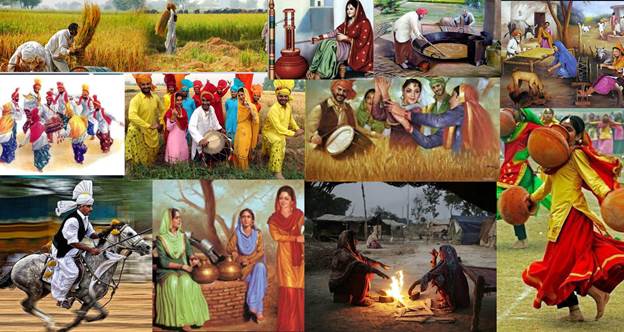
Music
The variety of Pakistani music ranges from diverse provincial folk music and traditional styles such as Qawwali and Ghazal Gayaki to modern forms fusing traditional and western music, such as the synchronization of Qawwali and western music by the world renowned Nusrat Fateh Ali Khan. In addition, Pakistan is home to many famous folk singers such as the late Alam Lohar, who is also well known in Indian Punjab. The arrival of Afghan refugees in the western provinces has rekindled Pashto and Persian music and established Peshawar as a hub for Afghan musicians and a distribution center for Afghan music abroad.
State-owned Pakistan Television Corporation (PTV) and Pakistan Broadcasting Corporation were the dominant media outlets, but there are now numerous private television channels. Various American, European, and Asian television channels and films are available to the majority of the private Television Networks, cable, and satellite television.
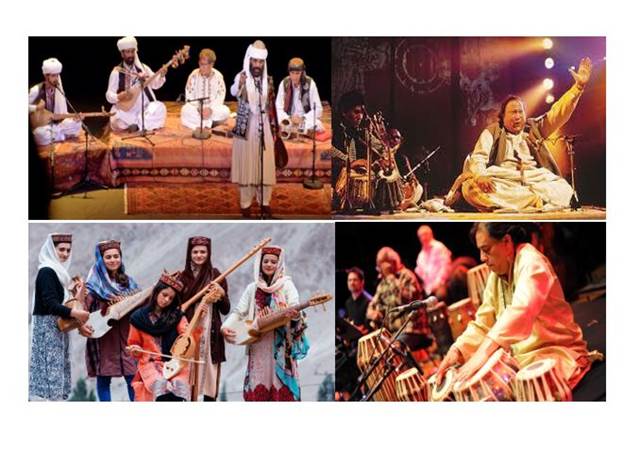
Festivals
The variety of Pakistani music ranges from diverse provincial folk music and traditional styles such as Qawwali and Ghazal Gayaki to modern forms fusing traditional and western music, such as the synchronization of Qawwali and western music by the world renowned Nusrat Fateh Ali Khan. In addition, Pakistan is home to many famous folk singers such as the late Alam Lohar, who is also well known in Indian Punjab. The arrival of Afghan refugees in the western provinces has rekindled Pashto and Persian music and established Peshawar as a hub for Afghan musicians and a distribution center for Afghan music abroad.
State-owned Pakistan Television Corporation (PTV) and Pakistan Broadcasting Corporation were the dominant media outlets, but there are now numerous private television channels. Various American, European, and Asian television channels and films are available to the majority of the private Television Networks, cable, and satellite television.
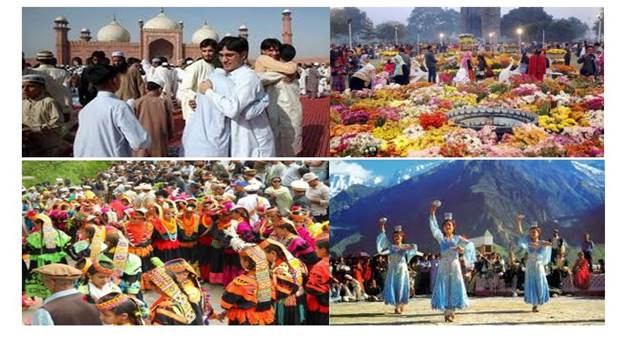
Tourism
Pakistan has a burgeoning tourism industry, due to the smorgasbord of cultures, peoples and landscapes it has to offer. Ancient civilization ruins of Mohenjo-Daro, Harappa and Taxila, to the hill stations of Murree, and the hiking tracks of Shogran and Siri Paaye, all have something to offer to each type of traveler. The northern parts of Pakistan have many old fortresses and towers. The Gilgit, Hunza and Chitral valleys are exceptionally beautiful sights to behold, along with the people here with typical costumes, folk dances, music and sports like polo and buzkashi.
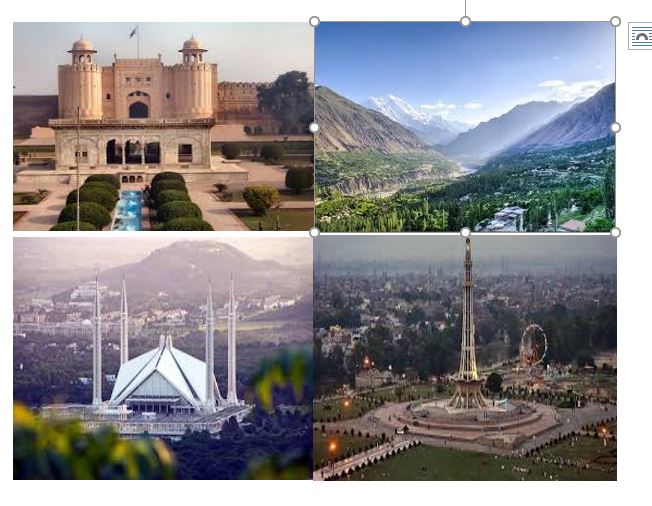
Sports
The official national sport of Pakistan is field hockey, but cricket and squash are the most popular sports. The Pakistan national field hockey team has won the Hockey World Cup a record four times, 1971, 1978, 1982 and 1994.
The Pakistan national cricket team won the Cricket World Cup in 1992, were runners-up in 1999, and co-hosted the games in 1987 and 1996. Additionally, they have also won the ICC World Twenty20 in 2009 and were runners-up in 2007. The team has also won the Austral-Asia Cup in 1986, 1990, and 1994. In 2017, Pakistan won the 2017 ICC Champions Trophy against their rival India. The women's team is yet to win a world cup.
At the international level, Pakistan has competed many times at the Summer Olympics in field hockey, boxing, athletics, swimming, and shooting. Hockey is the sport in which Pakistan has been most successful at the Olympics, winning three gold medals (1960, 1968, and 1984). Pakistan has hosted several international competitions, including the South Asian Federation Games in 1989 and 2004.
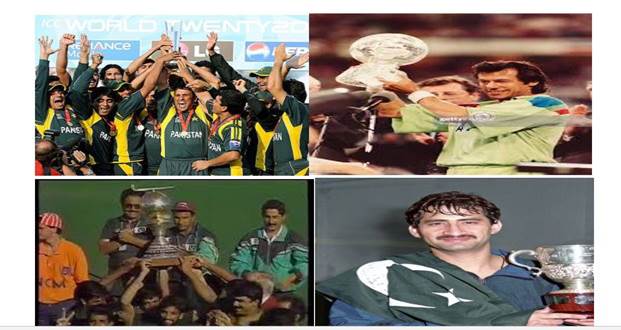
Food
The spreading of the Islam religion, starting in the A.D. 700s, forms the basis of Pakistani cuisine. Because Muslims (those who practice the Islam religion) are forbidden to eat pork or consume alcohol, they concentrated on other areas of food such as beef, chicken, fish, and vegetables.
The Moghul Empire (from India) began its ruling in present-day Pakistan around 1526. Its style of cooking, called Mughal, typically includes such ingredients as herbs and spices, almonds, and raisins. Mughal cooking remains an important part of Pakistani cuisine. Foods such as Shahi tukra, a dessert made with sliced bread, milk, cream, sugar, and saffron (a type of spice), and chicken tandoori are still enjoyed in the twenty-first century. Chicken tandoori is chicken that is cooked at a low temperature in special large clay ovens called tandoors.



